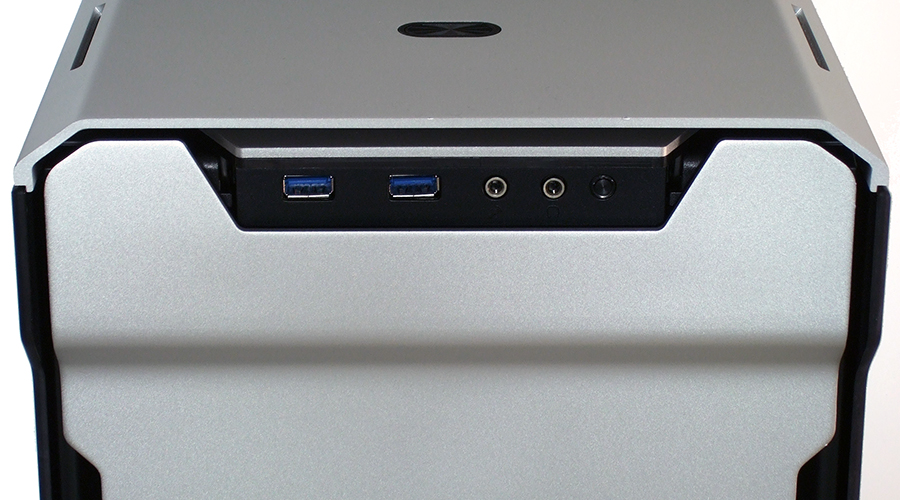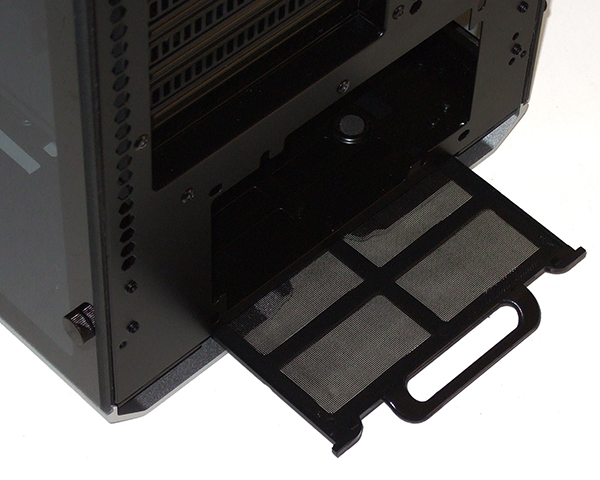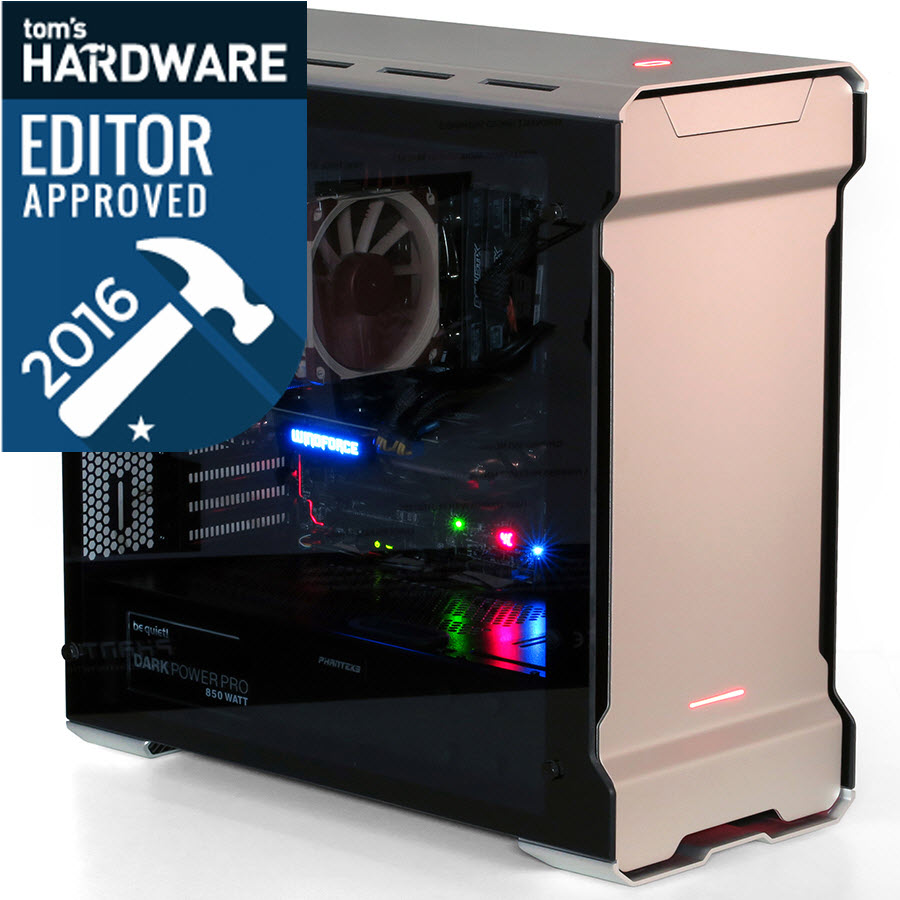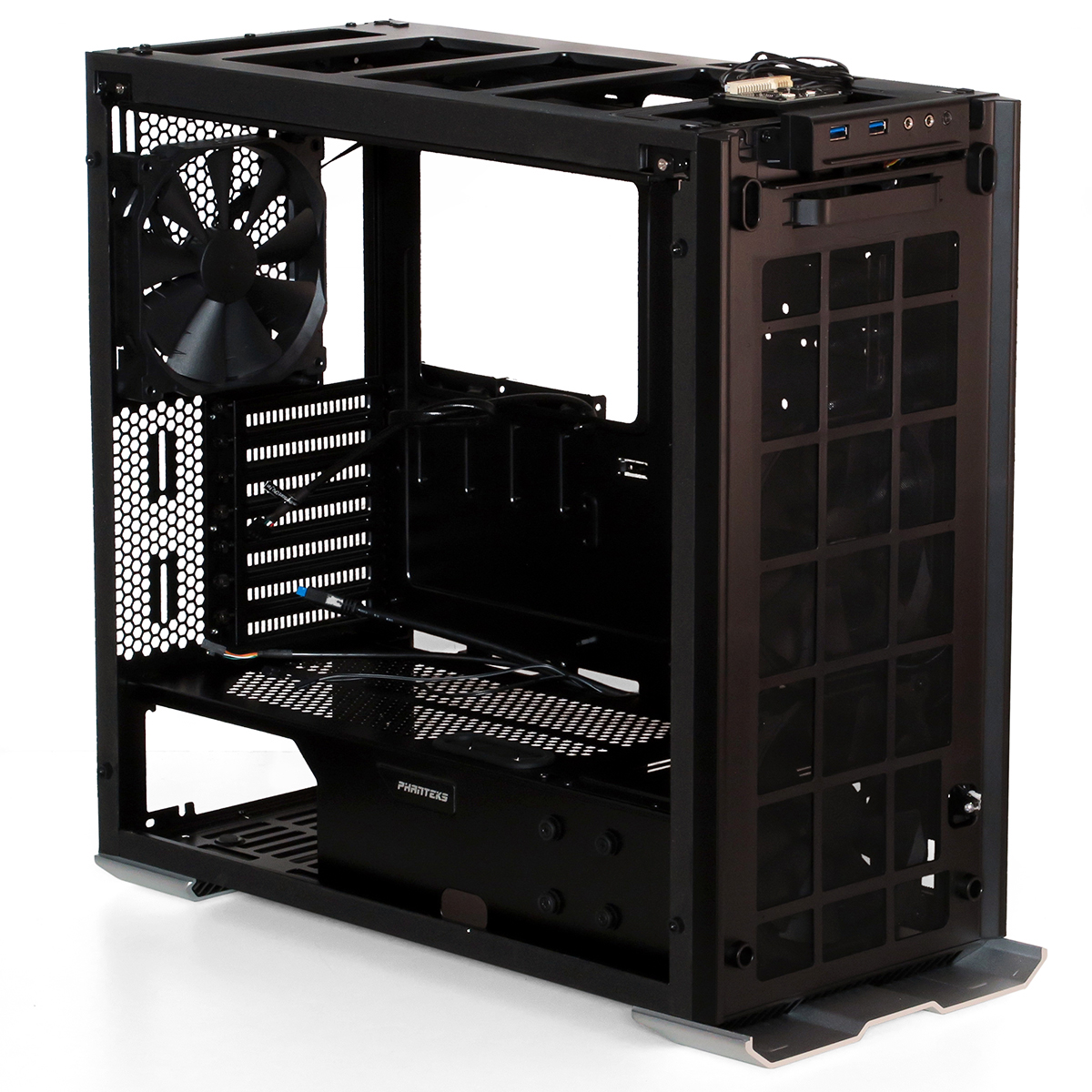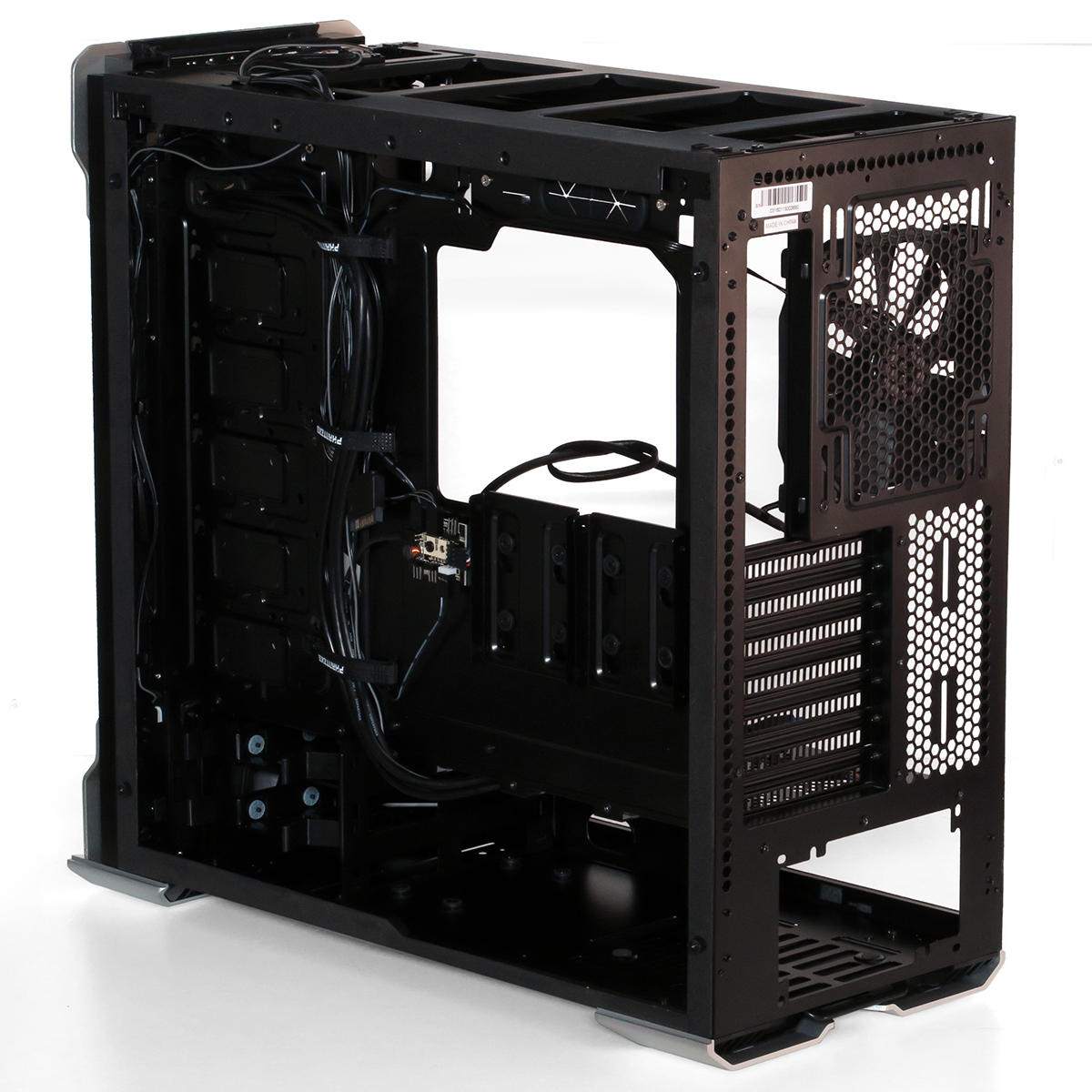Early Verdict
Potentially the ultimate production mid-tower chassis for quality and liquid-cooling fanatics, the Enthoo Evolv ATX Tempered Glass case comes up one slot and 0.3" short of getting our broader recommendation.
Pros
- +
Superior-quality materials
- +
Great cooling
- +
Extensive radiator support
- +
Superior overall performance
Cons
- -
No room for 10.7” motherboards
- -
Missing eighth expansion slot
- -
High price
Why you can trust Tom's Hardware
Specifications, Interior And Exterior
Phanteks leans pretty hard on the Enthoo name for case branding, and the Evolv name invokes a style that the company has spread across the spectrum from Mini ITX to full ATX. Phanteks even lists EATX capability for its Evolv ATX, though actual motherboard depth is limited to 10.4". The case would need another 0.3" to make it fit the plethora of 10.6" to 10.7" extreme-enthusiast motherboards that have been misnamed EATX by their manufacturers, but rest assured your standard ATX board fits. And now for something to get excited about!
Tempered glass adds a little show without making the case look gaudy, which is why it was used so often in furniture 30 years ago. It's harder than normal glass, more impact resistant, and those unfortunate enough to break it will find a bunch of glass pebbles rather than shards and splinters. Moreover, it does a far better job of containing noise than plastic side panels, while also being flatter and more scratch-resistant. Phanteks chooses a medium tint to help camouflage your uglier internal components while complimenting your external peripherals.
A pop-up door reveals two USB 3.0 ports, headphone and microphone jacks, and a control button for the case's RGB LED controller. Phanteks uses 3mm-thick aluminum for its face and top panels, and the front edge of the top panel reveals that it's a custom extrusion rather than a mechanically formed sheet.
Both side panels are in fact glass, so you'd better be willing to put some time into cable routing if you want to show your finished work to friends. Eight screw slots allow the rear fan to slide up and down to accommodate top or bottom fitting orientation of single-fan radiators of either 120mm or 140mm spacing.
A short dust filter slides under the bottom edge of the rear panel to cover the power supply's air inlet. The front intake filter is hidden behind the front panel, but let's take a look at a few dimensions before tearing into this thing.
Specifications
MORE: Best CasesMORE: Cases in the News
MORE: All Case Content
MORE: Cases in the Forums
One of the greatest features of the Enthoo Evolv ATX Tempered Glass isn't actually a feature, but the price. The MSRP is currently only $10 higher than the standard non-glass windowed version. Conversely, the biggest deficit in the Enthoo Evolv ATX is its inclusion of only seven expansion slots. Several three-way (and all four-way) SLI boards need an eighth slot for the bottom graphics card, and many need 0.2" to 0.3" more motherboard mounting space than the 10.4" provided. While compatible with most enthusiast-oriented hardware, the Enthoo Evolv ATX's combination of "not quite there" dimensions excludes a broad swath of ultra-high-end configurations.
Get Tom's Hardware's best news and in-depth reviews, straight to your inbox.
Peeling away the Enthoo Evolv ATX face panel, we find a snap-in filter that's large enough to cover two 140mm or three 120mm fans. Behind it is a partial shroud covering the show-side of a power supply, and the front of that shroud hosts four mounting points for an optional additional SSD tray.
The power supply slides in from the right side, which would be the non-windowed side of the standard version of this case. The Tempered Glass side panel of this version reveals all those hidden wires, along with the two SSD trays on the back of the motherboard tray, plus the two 3.5" drive trays that would otherwise hide behind the power supply shroud.
Current page: Specifications, Interior And Exterior
Next Page Building Inside The Enthoo Evolv Glass Case-
Crashman Reply
This sample is so nice it almost makes it worth the wait! J/K, they should have sent samples before this. But it is pretty nice and nicely pretty.17908420 said:Almost make me want to swap my Fractal Design XL R2...
-
falchard There is no knocking the tempered glass. Nearly all cases using tempered glass look fantastic. Mine is the inWin 904. It looks absolutely gorgeous, although its liquid cooling options are limited on the initial production run.Reply -
g-unit1111 Reply17908446 said:There is no knocking the tempered glass. Nearly all cases using tempered glass look fantastic. Mine is the inWin 904. It looks absolutely gorgeous, although its liquid cooling options are limited on the initial production run.
The In Win 904 is sweet. The price was the only thing keeping me from getting it over the Enthoo Pro that I have now. I really like this case though. -
Luay Tom I couldn't rap my head around the clearance for the second GPU.Reply
So in a four slot Z170 ATX motherboard like the Asus WS or Asrock Formula with SLI/CF, the second card would go in the third slot;
How close is a double slot card to the PSU shroud? What about triple slot? -
Crashman Reply
I have no idea what you're asking, but I can answer a bunch of questions until I hit the right one perhaps?17909065 said:Tom I couldn't rap my head around the clearance for the second GPU.
So in a four slot Z170 ATX motherboard like the Asus WS or Asrock Formula with SLI/CF, the second card would go in the third slot;
How close is a double slot card to the PSU shroud? What about triple slot?
There's only about 1/2" of clearance between the bottom slot cover and the PSU shroud. You'll never get a double-slot card in the motherboard's bottom slot. But that's usually the third or fourth GPU, not the second.
Your concern about the second GPU is mostly dependent on the location of the second-card's slot. If it's the third slot position from the bottom, you'll have about 2.8" of space for the graphics card. Add about 0.8" if it's one slot higher. Subtract 0.8" if it's one slot lower.
-
G0nz0 been waiting on a review for these cases fora long time. im happy they dont dissapoint. pricing really isnt that big of an issue when u factor in component cost aswell not to mention the amount of additional components they offer for the WC crowd to make your life exponentially easier. ill definetly be going with one of their cases for my next build. just cant decide between this one or the dual build case, both are temptingReply -
Luay Ok I did the math. What I meant was , On a full ATX board with 4 PCI-E slots, how close is the second card to the PSU shroud if installed in the third PCI-E slot from the top. The answer should be 2". I assume that would choke a triple slot video card.Reply -
Nuckles_56 That is a very nice case, I'm now very much considering it for my next build, especially if I decide to go with a full custom loopReply

